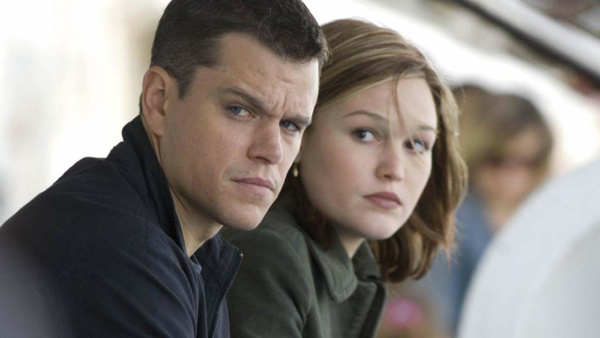Movie review by Greg Carlson
While it is not quite the instant classic many critics have touted, “The Bourne Ultimatum” is one of the season’s finest sequels by default. Relying on the well-oiled formula that made the first two Bourne outings so good, the latest installment, helmed by the excellent visual stylist Paul Greengrass (who also directed “The Bourne Supremacy”), fills in even more of the mysterious operative’s complex backstory. Robert Ludlum’s well-known creation appeals to many because the enticing premise invites close identification with the title character. Even as the world of highly trained super assassins remains wholly far fetched, we sympathize with Jason Bourne because he asks the question we ask ourselves: “Who am I?”
Greengrass manages to pose this query anew while forging jittery, adrenaline-fueled action sequences and intelligent political debate that masquerades as cat and mouse espionage. The spy thriller’s genre conventions are practically worn out, but the Bourne filmmakers hit the ground running and never look back. Similarly to his gripping “United 93,” Greengrass toggles between two locations as one major event simultaneously unfolds: Bourne on the move and the CIA command center attempting to trace Bourne’s path.
As the principal character, Matt Damon does the most comfortable acting of his career, inhabiting the relentless operative with a studied intensity and razor focus. Bourne’s superhuman abilities in hand to hand combat, his skill in languages, his aptitude for driving anything with a motor, and his preternatural gift for geography might liken him in some ways to James Bond, but the flavor of the Bourne series is substantially darker, which allows Damon to infuse the character with a combination of weary frustration and understated, cerebral contemplativeness.
“The Bourne Ultimatum” is not without its challenges. The shaky, handheld camerawork, designed by series director of photography Oliver Wood, will not be welcomed by every ticket buyer. A strong argument can be made, however, that the imagery tends to place the viewer directly in the middle of the action and lends an air of documentary-style verisimilitude and immediacy to the many scenes set in heavily peopled public spaces. This is evidenced in the sensational Waterloo Station sequence near the beginning of the movie as well as the harrowing rooftop chase through Tangier. Greengrass is especially adept at choosing visuals that convey to the audience a sense of spatial relationships between the pursued and the pursuers.
As a sequel, “The Bourne Ultimatum” attempts to provide both Bourne and the viewer with some enlightenment regarding the character’s amnesia and his origins. Although the answer is not particularly surprising, one specific element delivers a jolt. Greengrass stops short of nihilism, though, wrapping up the action with a coda suggesting that justice will be served to those most in need of it. Damon has indicated that he does not plan to return to the Bourne character, and if this is the case, he can be proud of completing a well-built trilogy, certainly a cinematic rarity. If Bourne does return, one hopes that the filmmaking team remains largely intact and as committed to visual storytelling as Doug Liman on the first and Paul Greengrass on the second and third installments.
